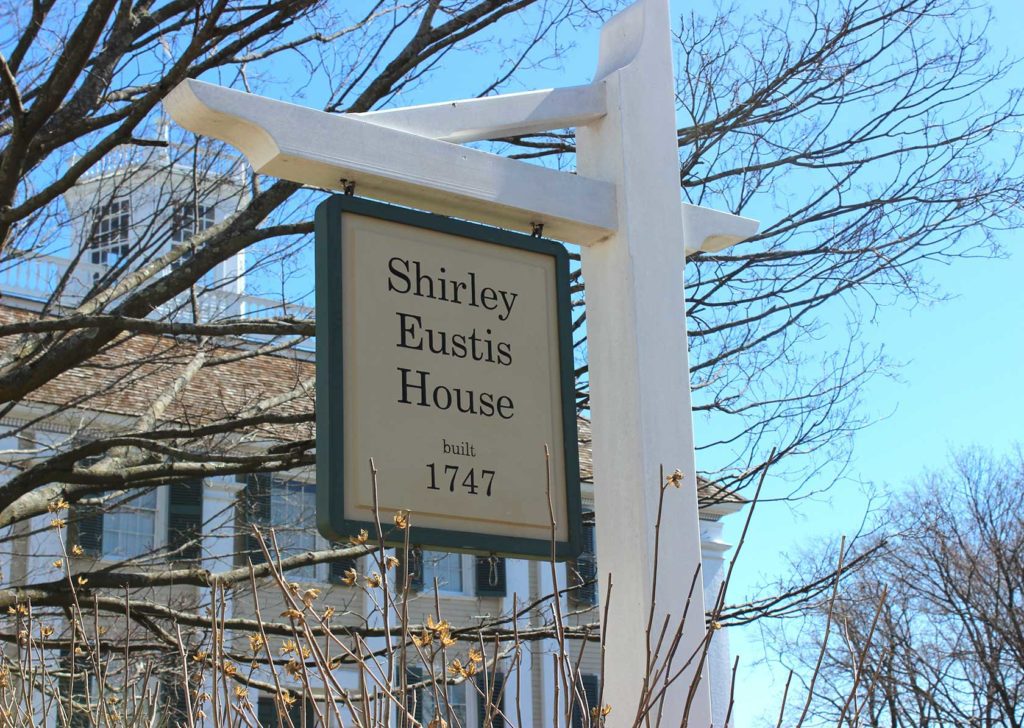Evidence of slave quarters at Shirley Eustis House
Harvard student identifies outbuilding

After receiving landmark status from acting Mayor Kim Janey last summer, Roxbury’s Shirley-Eustis House — one of the country’s last remaining colonial Governor’s mansions — is hoping to use the designation to illustrate the realities of Boston’s early involvement in the trans-Atlantic slave trade.
The designation in August not only included the three-story mansion itself, but also a property across the street thought to be one of the only remaining northern slave quarters — currently operating as a duplex.
The ‘outbuilding’ as it’s referred to, at 42-44 Shirley Street, blends into the other residential structures on the street with modern roofing and windows and a plain beige exterior. However, after speculation based on archival records of the Shirley-Eustis property, an investigation by Harvard scholar Aabid Allibhai revealed the unassuming building may be holding valuable historic secrets.
According to Shirley-Eustis house Executive Director Suzy Buchanan, Allibhai’s research concluded the outbuilding was likely built around 1750 as a stable for the property. Its mid-18th-century timber frame, plaster and lath and whitewashed surfaces have all led to the estimation of the construction date as well as the likelihood that enslaved Africans who maintained the home and its grounds lived in the space.
“They would have lived in the building with the horses,” Buchanan said.
She added, “What we learned from the research has really helped us tell a richer, more informed story about the lives of enslaved people, not just here at Shirley place, but generally.”
Janey, during her announcement last summer, acknowledged the important lessons to be gleaned from the Shirley-Eustis property.
“As we face modern-day racial inequities, it is essential to acknowledge our past by encouraging opportunities for collective processing of grief and investing in healing,” she said.
Buchanan said that in the long run, if funds can be found to purchase the site from its current owner, the Shirley-Eustis House Association could turn it into a place where they could interpret the role of the British Empire and slavery.
Other lessons can be learned from the adjacent structure as well. More than 100 years after the death of the mansion’s owner, the outbuilding was repurposed into “a representative example of multifamily housing from the mid-19th century in Roxbury,” Allibhai’s report states.
It goes on to say that, “Study of the building has the potential to reveal new information and insights into the history of the Shirley-Eustis Place property.”
Buchanan said that the conversion of a barn into multifamily housing is a common structure seen throughout the city and a perfect backdrop for an educational exhibit. She said, if long-term wishes come true, the association would turn the first floor of the outbuilding into an “interpretive center” to explore the role of the British Empire in the slave trade, as well as the legacy of the home’s original owner — Governor William Shirley.
“As we’ve explored the history of this house, you can really start to get a sense of how the social structure of the British Empire, the economics. We live with that inheritance today, in both the persistence of racism and the persistence of economic inequality. In America, those were inherited from the British Empire,” she said.
The Shirley-Eustis house was first constructed by the Royal Governor of Massachusetts Bay Colony and Commander-in-Chief of British forces in North America William Shirley as a summer home in what was then a rural landscape with views of the harbor. It was built in a distinctly British style, with all the lavish amenities a Colonial nobleman would require, including several parlors and a personal study.
As the British were ousted during the Revolutionary War, it was transformed into barracks, before becoming the home of Federalist Governor William Eustis after the Revolution.
After Eustis’ wife Caroline died in 1865, the house went on to serve many purposes, including a home for “fallen women,” a tenement house and convent before being condemned in 1913. In response to Boston’s plan to tear down the decrepit structure, the Shirley-Eustis House Association formed and took stewardship of the building.
It took until 1985 for enough funds to be raised and the mansion to be restored. It has since remained under the care of SEHA and its small team of volunteers who maintain the property, including a large lawn and a small orchard in memory of the late Mrs. Eustis.
The most recent expansion of the property was the acquisition and renovation of an adjacent carriage house moved to the property from Isabella Stewart Gardner’s country estate in Brookline. The carriage house was moved in 2000, and in 2020 was awarded a grant to redo the inside to accommodate events and performing arts.
Buchanan said with the addition of Boston’s landmark designation last year and an easing of pandemic restrictions, a new chapter is on the horizon for SEHA that will include building a volunteer base and creating strong community connections in order to explore Roxbury and Boston’s history.
“Our goal, I think, is to play a bigger role in Boston’s cultural landscape,” she said.
Beyond that, it’s unclear when and how the duplex at 42-44 Shirley St. could be turned into Buchanan’s vision, though for now the site is safe, as the current owner needs explicit permission from the Landmarks Commission to make any major changes to the property. For now, researchers and visitors to the Shirley-Eustis house will have to continue to use imagination and context clues to piece together what life for the enslaved residents may have looked like on the property nearly 250 years ago.








